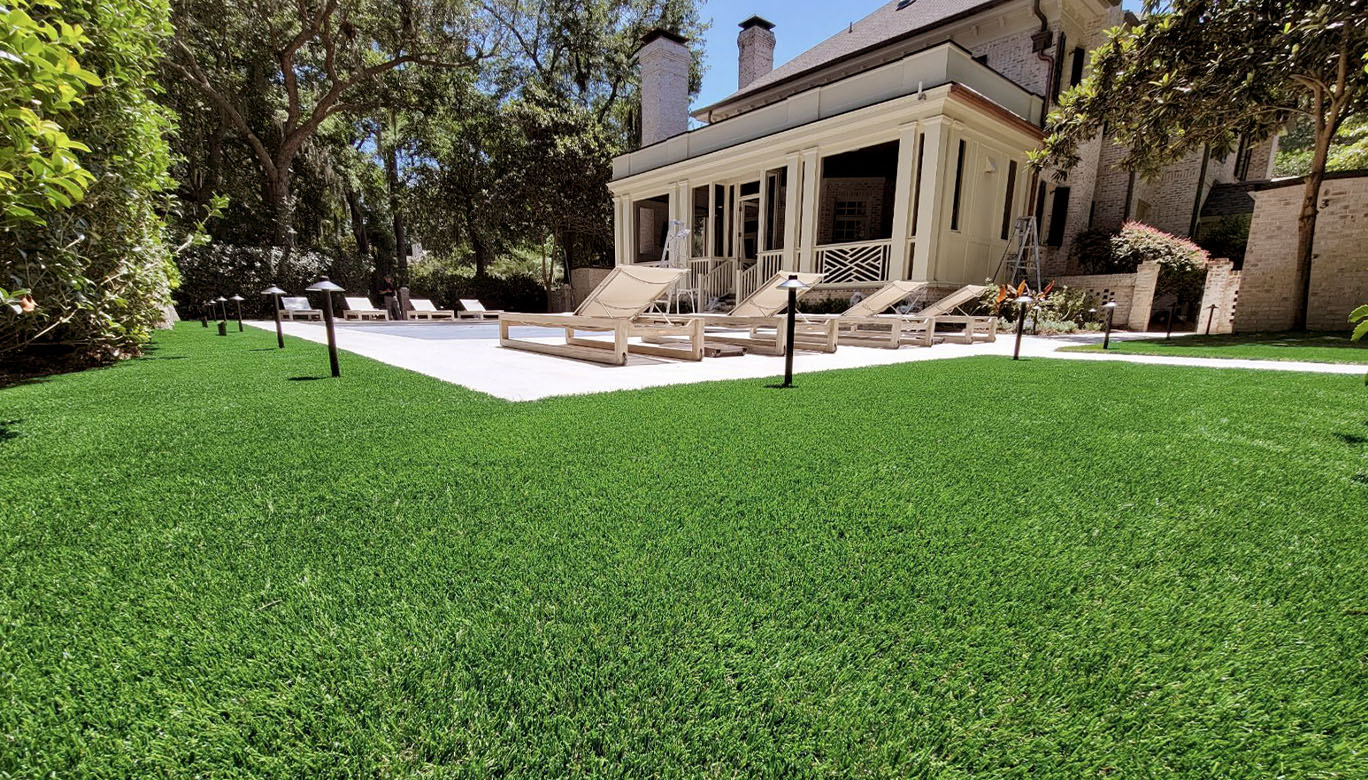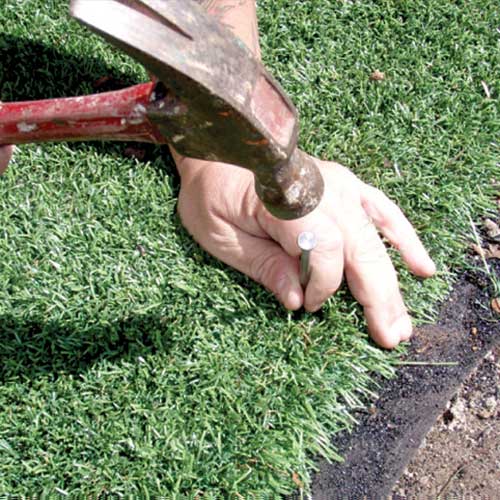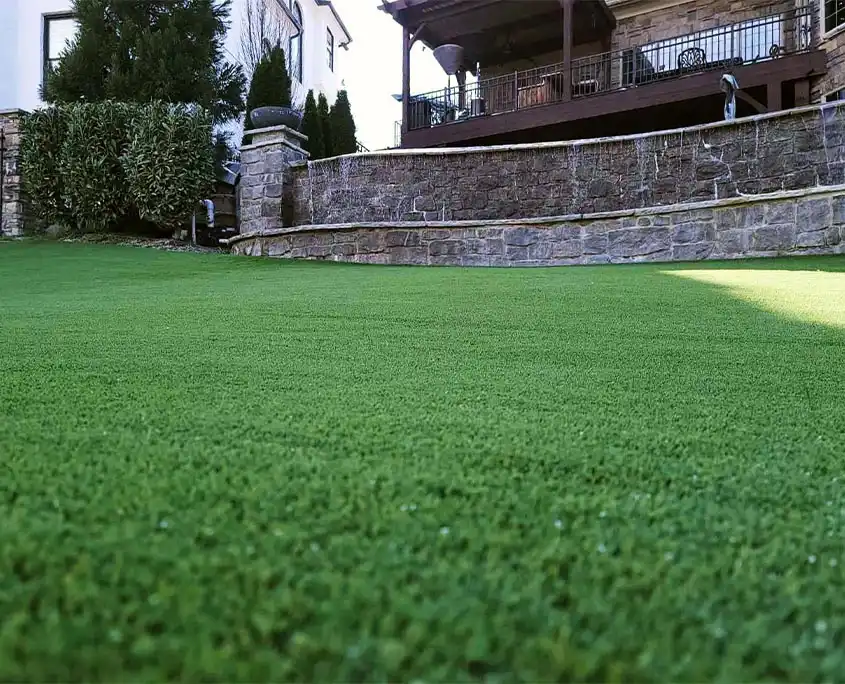High-Quality Arizona Turf Installation Solutions for Residences and Commercial Properties
High-Quality Arizona Turf Installation Solutions for Residences and Commercial Properties
Blog Article
Delve Into the Environmental Conveniences of Opting for Synthetic Grass Solutions
The fostering of man-made grass services provides an engaging opportunity to deal with pushing ecological challenges. By substantially decreasing water usage and lessening the application of unsafe chemicals, these options not only advertise lasting landscaping however additionally protect local ecological communities. In addition, the lower carbon impact connected with lowered maintenance activities adds to a much more sustainable strategy to land management. The effects of these benefits expand beyond simple preservation efforts, elevating questions regarding their lasting impact on habitat conservation and overall environmental equilibrium. Exploring these measurements reveals a complex interplay worth considering.
Water Conservation Advantages
One of one of the most substantial benefits of man-made grass is its capacity to preserve water. Typical yard yards need significant watering, particularly in areas vulnerable to drought or water restrictions. On the other hand, artificial lawn does not need watering, dramatically lowering the general demand for water sources. This feature is specifically beneficial in deserts where water shortage is a pressing concern.
By eliminating the need for normal watering, man-made lawn contributes to lasting landscape techniques and assists minimize the ecological effect of extreme water usage. The conservation of water extends to the decrease of drainage, which can lead to soil erosion and river contamination.
In addition, the setup of artificial grass allows home owners and municipalities to designate water resources a lot more successfully, focusing on important usages such as drinking water and farming. The change in the direction of synthetic grass not just promotes accountable water usage but additionally straightens with broader environmental goals focused on preserving natural deposits.
As neighborhoods significantly prioritize sustainability, the water conservation benefits of synthetic grass offer a compelling case for its adoption in residential and commercial landscape design tasks.
Lowered Chemical Use
The shift to synthetic grass substantially reduces the dependence on chemical treatments frequently made use of in natural grass maintenance. Conventional turf monitoring commonly involves the application of herbicides, chemicals, and plant foods to advertise development and control insects. These chemicals can position threats to human wellness, neighborhood wild animals, and the atmosphere, adding to dirt and water contamination.
In contrast, synthetic turf removes the requirement for these harmful materials. When installed, it calls for minimal maintenance, primarily being composed of routine cleaning and occasional infill replenishment. This reduction in chemical use not just benefits the instant atmosphere but additionally contributes to broader eco-friendly security. By reducing the launch of synthetic substances right into the environment, synthetic grass promotes much healthier dirt and water systems.
In addition, the absence of chemical drainage connected with synthetic grass installments aids safeguard regional waterways from contamination, supporting marine life and keeping biodiversity. Turf installation phoenix az. As communities significantly focus on sustainable practices, going with synthetic grass presents a feasible solution that lines up with ecological preservation objectives. Through this change, homeowner can delight in rich environment-friendly spaces without jeopardizing environmental wellness, leading the means for a much more sustainable future
Reduced Carbon Impact

Moreover, the installment of synthetic grass can lead to significant water preservation. All-natural lawns require considerable amounts of water for watering, which not just includes in the carbon impact related to water extraction and treatment but likewise stress neighborhood water resources. On the other hand, synthetic grass requires marginal maintenance, requiring no watering, thus dramatically reducing water use and its connected power expenses.
Furthermore, the longevity of man-made grass adds to its decreased carbon effect. With a life-span of approximately 15 years or even more, the demand for regular replacements is reduced, resulting in less waste and lower energy consumption in production and throwing away typical yard options. In general, man-made grass provides a lasting choice for ecologically mindful landscape design.
Habitat Preservation
Environment conservation is an essential factor to consider in the dispute over landscaping choices, particularly when contrasting fabricated grass to natural grass. Natural yard lawns frequently require extensive upkeep, consisting of making use of herbicides, chemicals, and fertilizers, which can adversely affect regional communities. These chemicals can leach right into the soil and rivers, damaging native flora and fauna and disrupting regional environments.
Artificial grass eliminates the need for harmful chemicals, thus safeguarding close-by wildlife and maintaining the stability of surrounding environments. The installment of artificial turf can lead to the conversion of former turf areas right into more biodiverse landscapes, such as pollinator gardens or indigenous plant areas, which can sustain regional wildlife.
Ultimately, the change to synthetic grass not only conserves water and minimizes maintenance efforts yet additionally fosters a much more unified connection between human activities and the native environment, promoting environment conservation at the same time.
Long-Term Sustainability
Long-term sustainability is a critical factor in assessing the benefits of synthetic grass over traditional yard yards. Among one of the most substantial benefits of fabricated lawn is its toughness; it can last as much as 15-20 years with very little maintenance, whereas natural lawn needs constant reseeding and replacement. This long life decreases the demand for consistent resources, such as water, fertilizers, and chemicals, which are vital for maintaining a healthy and balanced grass yard.
Additionally, synthetic grass contributes to a decrease hop over to these guys in carbon exhausts related to grass care tools. Conventional yards commonly need gas-powered lawn mowers, leaners, and blowers, every one of which add to air pollution. Turf installation phoenix az. In comparison, man-made turf gets rid of the demand for such equipment, promoting a cleaner environment
Moreover, the production of synthetic grass significantly uses recycled products, boosting its sustainability profile. As makers take on environmentally friendly practices, the environmental impact of man-made grass remains to reduce.

Verdict
The adoption of artificial lawn remedies offers substantial environmental advantages, including substantial water conservation, Arizona artificial turf lowered dependence on damaging chemicals, and a reduced carbon impact. Furthermore, synthetic grass aids in preserving natural habitats by lessening land disturbance and promoting long-term sustainability via the use of resilient materials. Jointly, these factors highlight the capacity of synthetic grass to add positively to environmental health and wellness and supply a practical option to standard landscape design practices in a progressively resource-conscious world.
In contrast, fabricated turf does not need watering, dramatically decreasing the total demand for water sources. By minimizing the release of artificial compounds right into the ecosystem, artificial lawn promotes healthier soil and water systems.
Moreover, the installation of synthetic grass can result in significant water preservation. In contrast, artificial turf requires minimal maintenance, needing no watering, consequently substantially reducing water usage and its connected power costs.

Report this page